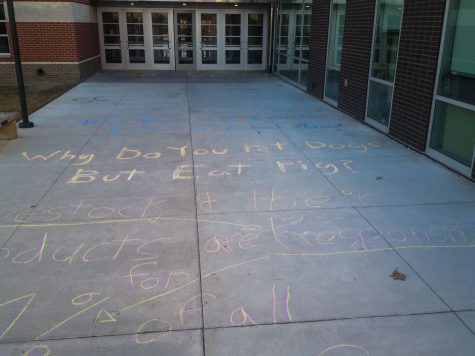Students discuss the new theme in today’s relationships
Dating has changed a lot since the Gen X generation. “People don’t really go on dates anymore,” senior Ethan Kallenberger said.
As the first semester draws to a close, students and teachers can feel stuck in the middle. While many feel stuck in Kansas, some appreciate its simplicity. Others are somewhere between a friendship and a relationship. For siblings being stuck in the middle can mean defying expectations. Those in the middle of the political spectrum discuss how moderation affects their lives. Firebirds acknowledge the stress of mid-year and provide finals tips. All in all, being in the middle encompasses different experiences.
A tricky middle space between friendship and relationship that has become so common is alluring to some due to its lack of definition. The days of “going steady” are long gone. Now, young couples are “cuffed” and “baes.” Though “taken” is often written in Instagram biographies, there are differing opinions about the true meaning of the word in this generation.
It seems Generation Z has developed a severe identity crisis when it comes to relationships. The need for assurance paired with this generation’s prevalent fear of rejection has created the “talking phase.” A constant in today’s young adult relationships, the “talking phase” leaves individuals stuck between a cordial friendship and romantic relationship.
The talking phase is “the period in a relationship which lasts for an indeterminable amount of time in which the primary constituent of relations between the two parties consists of talking” according to Urban Dictionary. For senior Genevieve Prescher, this is one of the most important parts of a relationship.
“[The talking phase] is great, it’s perfect for people to get know each other,” Prescher said. “The quality of conversation during the talking phase is above average because people are trying to impress each other, and people are responding quickly.”
Consisting primarily through electronic messaging such as iMessage, Twitter Direct Messages and even Facebook or Google Chat, individuals are presented with the opportunity for constant communication, a plus in sophomore Ryan Wyle’s book.
“[The talking phase] is very important for a relationship,” Wyle said. “You should get
to know the person and learn their interests. People rush into things too fast and it ends badly for the both of them, because they don’t know the other person.”
This prolonged period of conversation isn’t always for the best, however.
“Over text, you can almost sensor or screen what you say, so you are changing your interaction to make what you think the other person would be ideal, rather than necessarily being genuine,” senior Ethan Kallenberger said.
Since the talking phase includes constant communication, it nearly eliminates the need for dates. For Kallenberger, that isn’t necessarily a good thing.
“People are getting to know each other a lot faster than they would otherwise, when you’re in constant communication you’re always learning something new, whereas, each date would bring something new,” Kallenberger said.
Speeding up the process of getting to know one another creates an important effect on the foundations of relationships, especially when it doesn’t constantly include face to face contact.
“It’s bad the majority of relationships’ interactions happen over text, because that’s different than actually interacting in person,” Kallenberger said.
Evolving forms of communication have given teens the idea they need to be con- stantly in touch with their significant other, even more so when the relationship has not be defined. This societal norm of dependence essentially birthed the “talking phase.”
Young couples can now determine when they are ready to commit to being one another’s significant others. Young people are given the privacy and tools to determine the paths of their relationships. Whether a fan of the talking phase or not, it appears it’s here to stay. No longer are the days of going steady and hitting the sock hop. Now young people searching for love “slide into the DMs” or create a snap streak on Snapchat.
“The talking phase is just a product of our generation, just like dates were a product of our parent’s generation,” Kallenberger said.
Your donation will support the student journalists of Lawrence Free State High School. Your contribution will allow us to purchase equipment and cover our annual website hosting costs.









